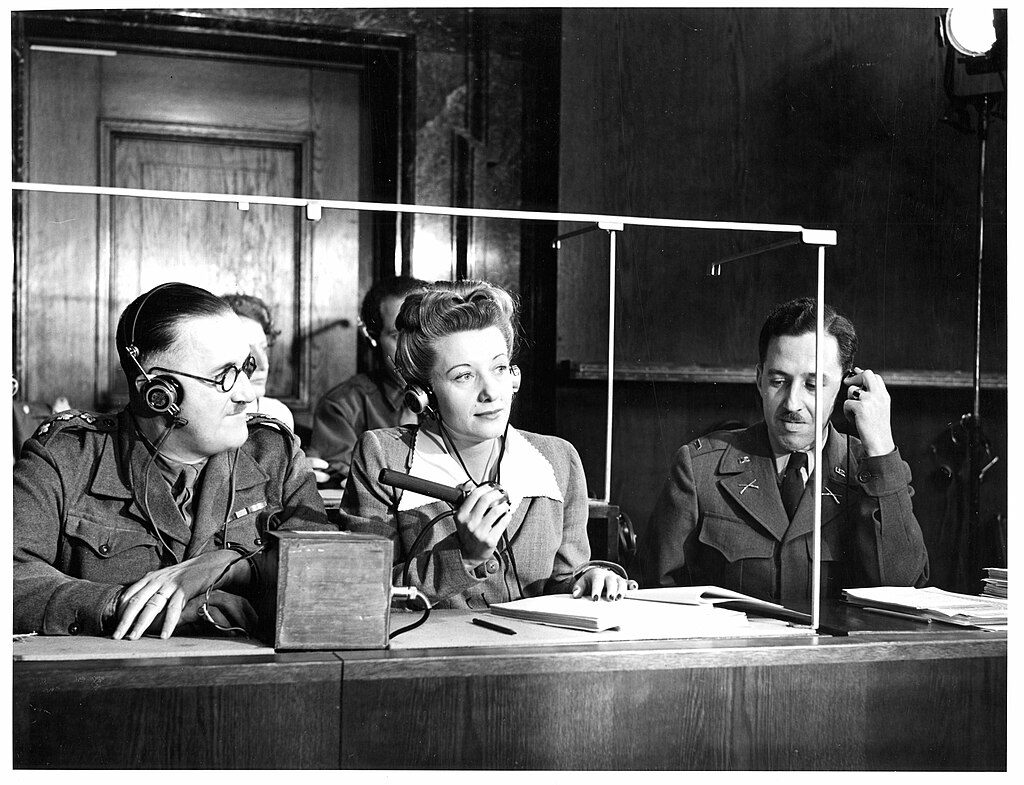
The first and best-known of the Nuremberg trials against the major Nazi perpetrators of war crimes during WWII took place between 20 November 1945 and 1 October 1946 in Nuremberg, Germany. Under unprecedented circumstances, politicians and military officers were required to answer personally for their alleged crimes before an international criminal court. The charges against the 21 high-ranking representatives of the Nazi regime included conspiracy, crimes against peace, war crimes, and crimes against humanity. Representatives of the prosecution and the judges came from the United States, the United Kingdom, France, and the Soviet Union, while the defendants and mostly German-speaking witnesses came from Germany – five different legal systems and four different languages. The need to use four languages throughout the trial had a profound effect: consecutive interpreting, the form of interpreting customary at the time, would have excessively prolonged the trial. It was therefore decided to introduce an innovative system to enable simultaneous interpreting in all four languages. Not only was the trial unprecedented in a legal sense, but it also represented the inauguration of modern simultaneous interpreting.

Opening of BDÜ Bavaria’s photo exhibition

In 2000, to mark the 50th anniversary of the Bavarian Translators’ and Interpreters’ Association, a predecessor of the Federal Association of Interpreters and Translators (BDÜ) in Germany, our colleague Dr Theodoros Radisoglou curated a photo exhibition depicting the work of the trials’ interpreters and translators that poignantly conveys the atmosphere during the historic trials. He drew from the excellent images of US military photographer Ray D’Addario, who meticulously documented the trial. The exhibition has since been presented at many courts and universities in Bavaria and further afield, including universities in Vienna and Prague, as well as at the Ministry of Justice in Berlin. On 12 January 2024, the exhibition opened at another important venue: the Federal Administrative Court in Leipzig. During her welcome address, Dr Susanne Rublack, Vice President of the court, emphasised the location’s particular significance.
Regional Association BDÜ East, the local organiser of this exceptional exhibition, also received support from the University of Leipzig and its Institute for Applied Linguistics and Translatology (IALT), which has a long tradition of training language professionals. Dr Radisoglou shared his knowledge during a guided tour of the exhibition and in a subsequent lecture in the University of Leipzig’s Audimax auditorium, vividly bringing the work of these interpreters and translators to life. The lecture was complemented by remarks from former president of the Nuremberg Higher Regional Court, Professor Klaus Kastner, who described the legal peculiarities of the trial and explained why it remains significant today.
More information about the exhibition can be found in German here. One of the exhibition’s next stops will be in Luxembourg in October 2024.
Carol Hogg, former board member, BDÜ
Norma Keßler, President, BDÜ

